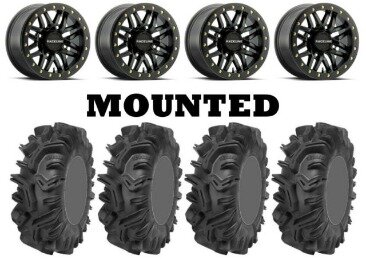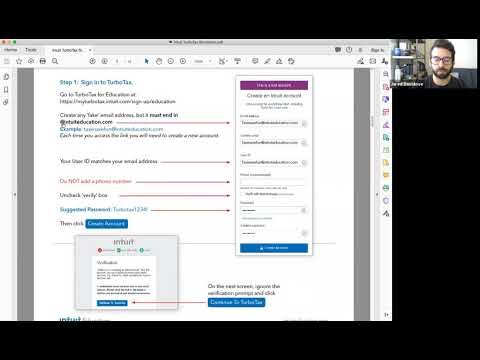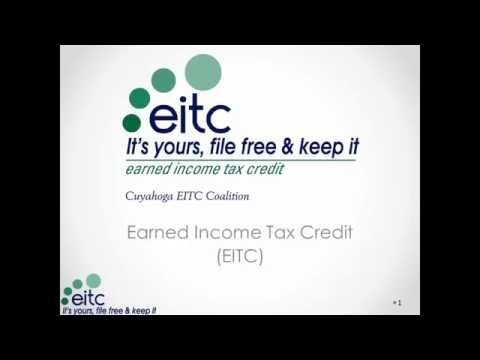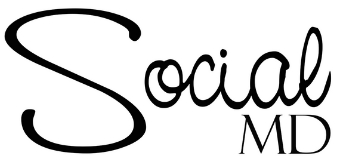28 Apr total cost Definition & Facts
Contents:

On a contribution margin income statement, costs are classified as variable or fixed. Regardless of how the costs are classified, reported net income or profit is always the same on both income statements. Various cost concepts help in understanding the business operations and cost involved in business operation of the firms better. For example opportunity cost is the return involved in the next best alternative.

DepreciationDepreciation is a systematic allocation method used to account for the costs of any physical or tangible asset throughout its useful life. Its value indicates how much of an asset’s worth has been utilized. Depreciation enables companies to generate revenue from their assets while only charging a fraction of the cost of the asset in use each year. Equity InterestsEquity Interest is the percentage of ownership rights either individual or a company holds in one company which gives holder voting right in that company. They have residual rights in economic benefits obtained from the business or realization from assets. The concept of cost class 11 notes gives a wholesome definition of what cost stands for in economics.
How do you calculate the historical cost in accounting?
Economic profit is the difference between total cost and total revenue. It is mainly defined as the cost incurred by the producer in the course of business. Below is an example of a contribution margin income statement. In general, financial accounting is concerned with classifying, recording, and reporting financial transactions in a formal accounting system. Accountants, higher management, creditors, investors, and other external users are the primary users of financial accounting reports.

Actual Costs or Outlay Costs means the actual amount of expenses incurred to produce or acquire a good or service. It is a cost which is incurred in past, incurred in the present accounting period and is likely to be incurred in future. Determine the cost classifications and cost behavior for the below costs.
You can learn more about the standards we follow in producing accurate, unbiased content in oureditorial policy. Indirect Costs”Costs that cannot be easily and conveniently traced to a unit of product or other cost object.” Social costs are the sum of private costs and external costs.
At their actual purchase price, no matter how much they have appreciated over time. However, they are not bound to do so as they can maintain the asset’s current value in their accounting records. Comparing the current value of an asset with its original value reveals its monetary performance over the years. AssetAssets in accounting refer to the organization’s resources that hold specific economic value and facilitate business operations, meet expenses, and generate cash flow. They create the company’s worth and are recorded in the balance sheet.
Views
It states that businesses must record and account for assets and liabilities at their historical cost or original cost at the time of their purchase or acquisition by a company. Production costs are the cumulative costs of manufacturing products, including labor, materials, and overhead. Explore the details of period costs and how product costs affect financial statements through examples. Let’s say it cost the company $500,000 to manufacture 1,000 exercise bikes.
Magick’s general and administrative costs are presented below. An example of a traditional income statement is presented below. She is also the founder of her own content marketing firm, Femi Writes.
Assets that are quoted with the ready market value must be reported at the current market value. Our writing and editorial staff are a team of experts holding advanced financial designations and have written for most major financial media publications. Our work has been directly cited by organizations including MarketWatch, Bloomberg, Axios, TechCrunch, Forbes, NerdWallet, GreenBiz, Reuters, and many others. We follow ethical journalism practices, which includes presenting unbiased information and citing reliable, attributed resources.
- For example, if a company needs to build an entirely new factory in order to produce more goods, the cost of building the factory is a marginal cost.
- Companies must be mindful of when increasing production necessitates results in step costs due to changes in relevant ranges (i.e. additional machinery or storage space needed).
- Are two phrases describing the original price of an object and its ups and downs over time.
- The marginal cost slope will vary across company and product, but it is often a “U” shaped curve that initially decreases as efficiency is realized only to later potentially exponentially increase.
The two data point used in the High-Low Method comes from the two extremes which may not be representative of the regular course of operation. Brian Duignan is a senior editor at Encyclopædia Britannica. His subject areas include philosophy, law, social science, politics, political theory, and religion. A defensive cost is an environmental expenditure to eliminate or prevent environmental damage. Defensive costs form part of the genuine progress indicator calculations.
Cost concepts
This is because the organization is recording its assets at the original cost following the cost principle. These concepts are very important in the decision-making of the business enterprise. Learning these cost concepts and their applicability helps boost the business and the firm in total. Described above is a fair overview of the major defining factors of the concept of costs. Cost principle is the accounting practice stating that any assets owned by a company will be recorded at their original cost, not their current market value.
- Marginal cost is reflective of only one unit, while average cost often reflects all unit produced.
- These notes enhance concentration and attention to detail.
- As a result, it differs from the fair market, reflecting the asset’s current value.
- indirect costs, overhead and burden are usually used interchangeably.
These costs can control variable costs and help in analyzing the break-even analysis. An income statement also referred to as a profit and loss statement, reports an organization’s revenue and expenses for a specified period of time. The formula to compute net income is revenues less expenses. If an organization has more revenue, the resulting number is positive and represents net income or profit. If an organization has more expenses, the resulting number is negative and represents a net loss. On a traditional income statement, costs are classified as product or period.
What does cost mean in economics?
All goods and services in an economy have a cost of their own and without the concept of cost, it would be impossible for us to exchange goods and services. The concept of cost is therefore a central idea in economics that help us steer economic progress. Private costs incurred by firms yield benefits or rewards in the long run.
Private costs are actual costs incurred due to a firm’s operations. Both implicit costs, such as depreciation, insurance, and interest, and explicit costs, such as wage, rent, and raw materials are private costs. Money Cost of production is the actual monetary expenditure made by company in the production process.
It costs $225 to buy a LIV Golf jumper in Australia. Can Greg Norman … – Sydney Morning Herald
It costs $225 to buy a LIV Golf jumper in Australia. Can Greg Norman ….
Posted: Fri, 21 Apr 2023 19:45:00 GMT [source]
For example for a goods firm, its costs incurred in production and transportation yields the reward of revenues. Therefore, accounting costs include all types of cash payments made by a firm. Outlay costs are real expenditures made by an entity and books of accounts necessarily record them.
Purpose 1: Classification for Assigning Costs to Cost Objects
Period costs are $15,000 rent plus $9,600 miscellaneous expenses for a total of $24,600. Period costs are the other non-inventory costs Kelly incurred to run her business. Cost classification is the process of separating costs into different categories. The costs incurred by an organization can be classified in many different ways. An important cost classification in accounting is distinguishing product costs from period costs. In financial accounting, product costs are treated differently than period costs.
Franchise Deep Dive: Champs Chicken Franchise Costs, Fees … – 1851 Franchise
Franchise Deep Dive: Champs Chicken Franchise Costs, Fees ….
Posted: Fri, 21 Apr 2023 14:10:02 GMT [source]
Here the cost involved is the Opportunity Cost of the land and building. This income/rent which could have been earned under the next best investment option is the opportunity cost which needs to be considered while calculating the Real Cost for the firm. Production costs consist of both fixed costsandvariable costs. Fixed costs do not change with an increase or decrease in production levels, so the same value can be spread out over more units of output with increased production.
Cost principle is a standard accounting practice for publicly traded companies. Using cost principle follows the Generally Accepted Accounting Procedures , which is established by the Financial Accounting Standards Board . Robert Kelly is managing director of XTS Energy LLC, and has more than three decades of experience as a business executive.
It is still worth that on his books in 2020 and has not personal accountantd. The fair market value of that property is easily above $300 million in 2020. Direct Costs”Costs that can be easily and conveniently traced to a unit of product or other cost object.”

Such damage/loss/cost is added to the private costs to get fair idea of Social cost. Fixed Cost is that cost which does not change irrespective of whether the firm is operating or not. For example on account of Strike on account of Lockout in Maruti-Suzuki’s Manesar plant the production process stands still. Even when the plant is not operating the Firm still has to bear such expenses which are indirect in nature. For Example Rent of the factory premises, Wages of administrative employees etc.
Tesla gives update on its game-changing 4680 battery cell – Electrek
Tesla gives update on its game-changing 4680 battery cell.
Posted: Fri, 21 Apr 2023 14:59:00 GMT [source]
In other Fixed cost is not related direct production/manufacturing expenses. The resources of any firm operating in the market are limited and investment options are many. The firm therefore has to decide or select only those investment opportunities/options which provide the firm with the best return or best income on investment. This means that if a firm can invest money/ resources only in one investment option then the firm will select that investment option which promises best return on investment to the firm. In other words while doing so the firm gives up/rejects the next best option for investing the funds.
These are recorded on the company books either by depreciation or amortization . The book value of an asset can be calculated by subtracting the depreciation or amortization amount from the original cost of the asset. The original cost will include every expense that goes into the cost of acquiring an asset and setting it up for use. These include shipping and delivery, set-up cost, training cost, renovation/restoration cost, etc. The historical cost will appear on the balance sheet and would not change based on market expectations of its value.
Similarly, wages are also a direct or traceable cost because they are related to the operation of the business. Despite this, historical cost continues to be used as a basis for preparing primary financial statements. For example, suppose that a piece of land is acquired by a business at a specific price and, accordingly, is recorded as an asset in the books at that cost. Further suppose that the price of the land increases (e.g., twice the original cost in two years).
Ans.Opportunity cost is the cost of opportunity lost due to selecting an alternative opportunity and leaving the next best opportunity for this. An example of outlay cost is the money spent on buying goods and services. The primary reason, of course, is that most people cannot agree on what an asset’s present value is, whereas the price paid as the asset’s acquisition cost is beyond dispute . Any assets that are realized within a short time do not suffer from this problem.
In this simple example, the total cost per hat would be $2.75 ($2 fixed cost per unit + $0.75 variable costs). Cost principle, also referred to as historical cost principle, is an accounting practice that records the original purchase price of assets on financial statements despite fluctuating market changes. Private costs are costs that occur due to the day-to-day operations of a business. So, private costs are the result of the operation of the firm itself. The private costs are, therefore, borne by the organizations themselves.

No Comments